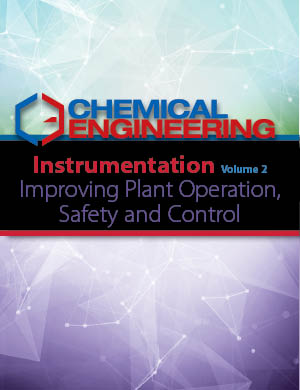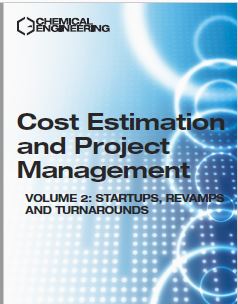Description
Volume 2 of this 2-part guidebook contains “Facts at Your Fingertips” guide sheets, and practical, how-to engineering articles, all of which were originally published in Chemical Engineering. Instrumentation provides vital information to operators of chemical process industries (CPI) facilities, to ensure proper operation and safe control of operations.
This volume focuses on the selection and operation of instrumentation to reduce known CPI plant hazards. The detailed engineering articles focus on such critical topics as the use of instrumentation to improve hazard area classification and process hazards analysis, ensure reliable control valve performance, monitor and manage flame hazards, reduce the risk of dust explosions, manage so-called safety-instrumented systems, improve pipeline safety, reduce the risk of cybersecurity incidents and more.
Delivered in a PDF format, 149 pages.
Articles Include:
Sampling Particulate Materials the Right Way
To obtain a representative sample for particle size characterization, adhere to the golden rules of sampling and follow these best practices
The Direct Integration Method: A Best Practice for Relief Valve Sizing
The approach described here is easier to use, and provides more-accurate results, compared to leading valve-sizing methodologies
Engineering for Plant Safety
Early process-hazards analyses can lead to potential cost savings in project and plant operations
Managing SIS Process Measurement Risk and Cost
With a focus on flowmeters, this article shows how advances in measurement technologies help safety system designers reduce risk and cost in their safety instrumented systems (SIS) design and lifecycle management
Column Instrumentation Basics
An understanding of instrumentation is valuable in evaluating and troubleshooting column performance
Control Valve Position Sensors
Control Valve Performance
Common Mistakes When Conducting a HAZOP and How to Avoid Them
An important part of ensuring the success of a HAZOP study is to understand the errors that can cause the team to lose focus
Chemical Process Plants: Plan for Revamps
Follow this guidance to make the most of engineering upgrades that are designed to improve plant operations or boost throughput capacity
Point-Level Switches for Safety Systems
Industries that manufacture or store potentially hazardous materials need to employ point-level switches to protect people and the environment from spills
Control Strategies Based On Realtime Particle Size Analysis
Practical experience illustrates how to achieve better process control
Process Hazards Analysis Methods
Aging Relief Systems — Are they Working Properly?
Common problems, cures and tips to make sure your pressure relief valves operate properly when needed
Overpressure Protection: Consider Low Temperature Effects in Design
Understanding the inherent limitations of current over-pressure protection analyses is key to developing a more robust heuristic
Things You Need to Know Before Using an Explosion-Protection Technique
Understanding the different classification methods is necessary to better select the explosion-protection techniques that will be used
Cybersecurity Defense for Industrial Process- Control Systems
Security techniques widely used in information technology (IT) require special considerations to be useful in operational settings. Here are several that should get closer attention
Plant Functional Safety Requires IT Security
Cybersecurity is critical for plant safety. Principles developed for plant safety can be applied to the security of IT systems
Dilute-phase Pneumatic Conveying: Instrumentation and Conveying Velocity
Follow these guidelines to design a well-instrumented and controlled system, and to optimize its conveying velocity
Alarm Management By the Numbers
Deeper understanding of common alarm-system metrics can improve remedial actions and result in a safer plant
Understand and Cure High Alarm Rates
Alarm rates that exceed an operator’s ability to manage them are common. This article explains the causes for high alarm rates and how to address them
Wireless Communication in Hazardous Areas
Consider these criteria in deciding where wireless fits in today’s CPI plants and the explosive atmospheres that permeate them




